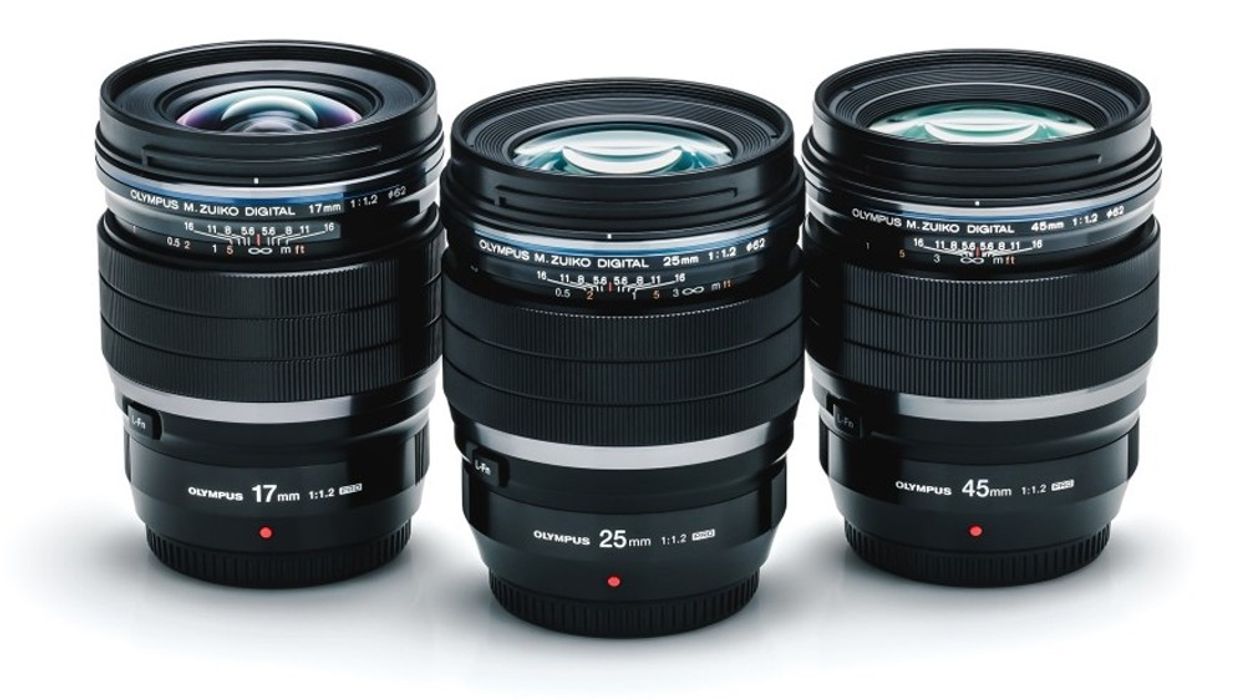Olympus Adds 17mm & 45mm F1.2 Lenses to Micro Four Thirds Arsenal
Olympus unveils two new fast F1.2 primes for Micro Four Thirds shooters.

While we were busy re-binging season one of Stranger Things (which we should mention, entirely unrelated to this post, was shot by DPs Tim Ives and Tod Campbell on RED Dragon with Leica primes), Olympus released two new Micro Four Thirds (MFT) lenses in its M.ZUKIO PRO line.
Olympus and Panasonic both favor the smaller MFT sensors over APS-C and full-frame systems, and with the demand to fill untapped gaps in speed and focal length, the lens collection continues to grow. This is good news for MFT shooters as Olympus now offers a 17mm and 45mm at F1.2 based on the same design philosophy as the existing 25mm F1.2.

Optically, it's constructed from 15 elements in 11 groups to maximize its performance while deflecting common aberrations like comatic, distortion, color bleeding, and chromatic.

Both lenses are equipped with fast, precise AF and the Movie and Still Compatible (MSC) mechanism provides quiet, smooth focusing ideal for shooting video. The Z Coating Nano technology adds a sharp clarity to the image quality while reducing ghosting and flares.
The fast, wide-open F1.2 aperture is ideal in low-light situations for shooters, but it will be interesting to see reactions from Olympus' "feathered bokeh." The rounded, nine blade aperture design provides two types of bokeh effects: solid and feathered. Shooting wide open at F1.2 will produce the feathered look and if you stop down, a more traditional solid bokeh takes shape.
The 45mm is expected late November with the 17mm to follow January 2018. Both carry a street price around $1,200. For more technical details, check out Olympus’ pages for the 45mm and 17mm.
45mm Tech Specs:
- Focal Length: 45mm
- 35mm Equivalent Focal Length: 90mm
- Lens Construction: 14 Elements in 10 Groups
- Dust & Drip Proof
- Closest Focusing Distance: 0.5m
- Aperture rage: F1.2 - F16
17mm Tech Specs:
- Focal Length: 17mm
- 35mm Equivalent Focal Length: 34mm
- Lens Construction: 15 Elements in 11 Groups
- Dust & Drip Proof
- Closest Focusing Distance: 0.2m
- Aperture range: F1.2 - F16

 No Film School's coverage of
No Film School's coverage of 









